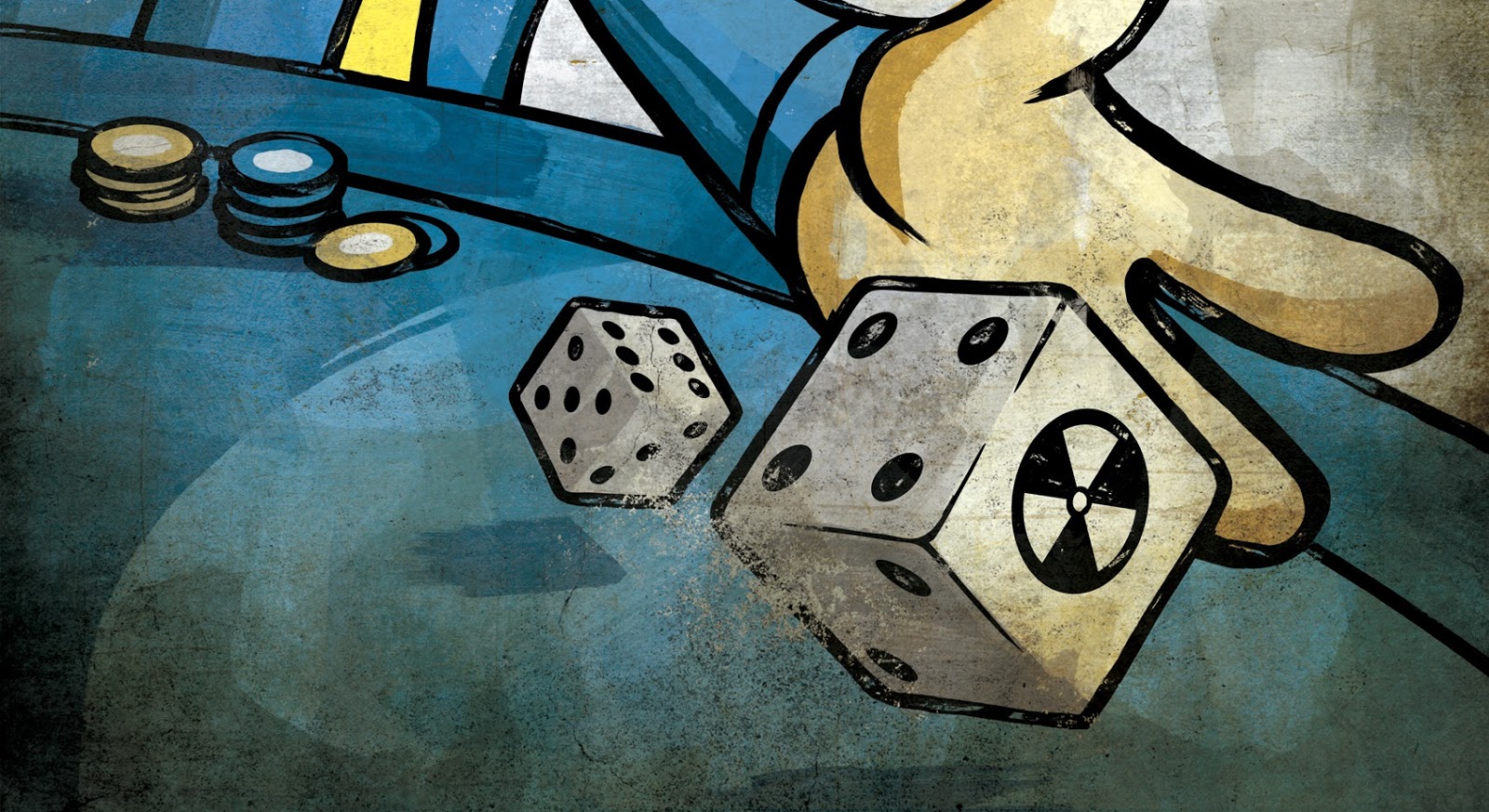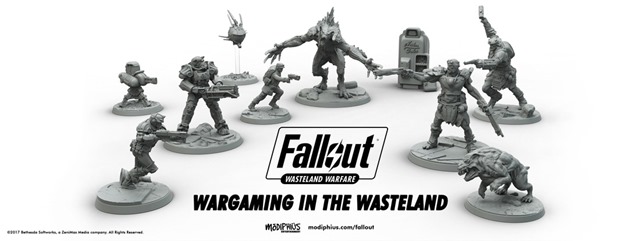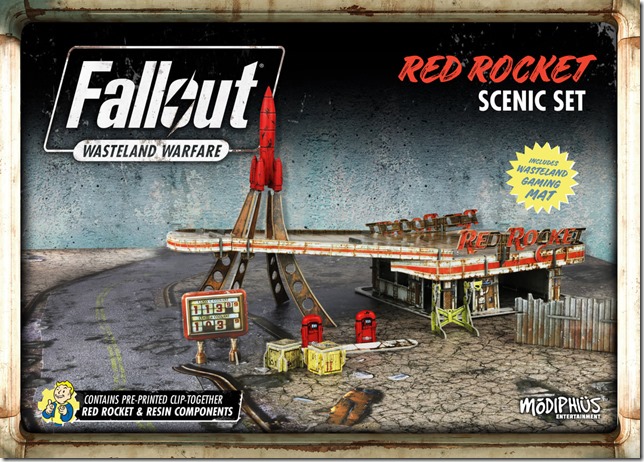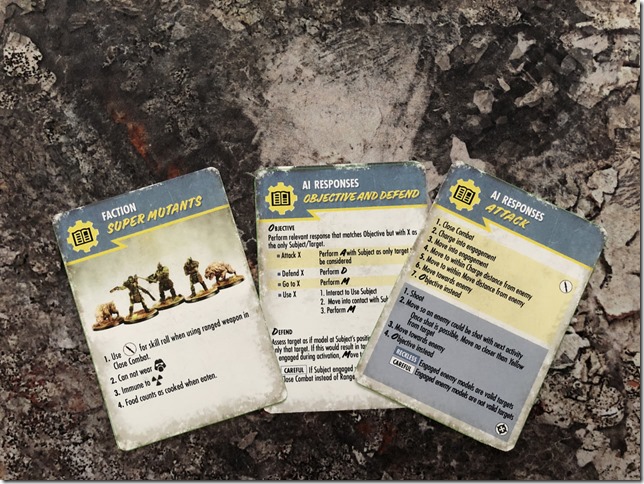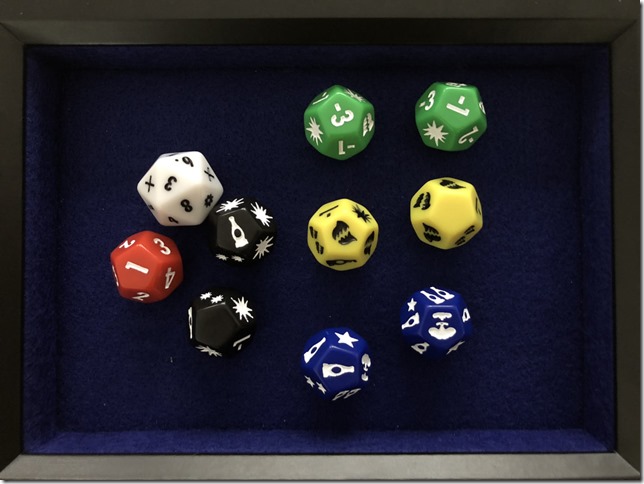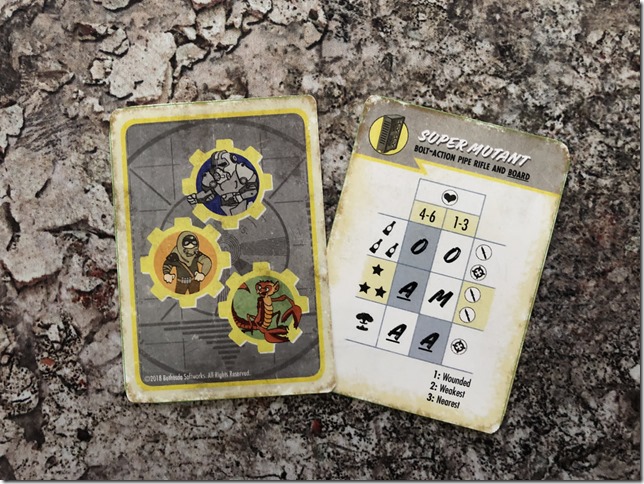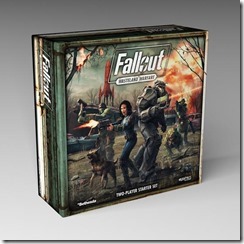 Stargazer’s World is first and foremost a roleplaying games blog, but that doesn’t mean we can’t cover board or tabletop miniature games from time to time. One game I am very excited about is Modiphius’ Fallout Wasteland Warfare. It’s an exciting Fallout miniature game which can be played cooperatively, competitively and even solo. Since I am a huge fan of the Fallout franchise, I reached out to Modiphius and asked if James Sheahan, designer of the game, was willing to answer a few questions for us. Luckily he agreed. Before delving right into the interview I want to thank James for taking his time to answer my questions!
Stargazer’s World is first and foremost a roleplaying games blog, but that doesn’t mean we can’t cover board or tabletop miniature games from time to time. One game I am very excited about is Modiphius’ Fallout Wasteland Warfare. It’s an exciting Fallout miniature game which can be played cooperatively, competitively and even solo. Since I am a huge fan of the Fallout franchise, I reached out to Modiphius and asked if James Sheahan, designer of the game, was willing to answer a few questions for us. Luckily he agreed. Before delving right into the interview I want to thank James for taking his time to answer my questions!
Stargazer: Thanks again for taking your time and answer our questions. Before we talk about Fallout Wasteland Warfare, let’s talk about you. Who is James Sheahan?
James: My pleasure, Michael. I worked in video games for 10 years and then as a consultant/freelancer game designer for the last 12 years working for games companies, global ad agencies, Google and others. Like most of us, I have played board games, RPGs, wargames and video games since I was young, and I love film and fiction too. I actually didn’t start out in games as a designer, but I worked my work across into design as that was my main passion. I have been very fortunate to have had a very varied experience – some of it, even I can’t quite believe.
Stargazer: Can you tell us a bit about how the idea for a Fallout miniatures game was formed? What problems arose during development? Feel free to share any interesting anecdotes – we love those!
James: The idea for a Fallout miniatures game was Chris Birch’s – owner and Director of Modiphius Entertainment – who knew a wargame with great models would fit perfectly with Fallout. Fallout has such a broad fan-base that it needed a game that could appeal to all types of players and this was one of the key challenges: To create a game that could appeal to both lighter/general gamers (who may not have played a wargame before) who want to experience story-rich adventures in the Fallout Wasteland, as well as appeal to experienced wargamers who want pure wargaming, like organised play, plus all types of player inbetween. It needed simplicity which could also deliver detail, plus could handle lots of variety to bring the myriad of creatures, weapons, items in the Fallout games to life. It’s interesting to look back and the hand-drawn unit and weapons cards I made are very similar to how they are in the final game – so the fundamental systems were created at the very start. The tough part was then how to enable players to choose which optional elements they wanted so they could tailor the gameplay and experience to what they wanted.
Stargazer: For many people Fallout is first and foremost a roleplaying game franchise. Does Fallout Wasteland Warfare have some roleplaying aspects in it? Is there a progression system for the various units?
James: Fallout: Wasteland Warfare matches the video games closely with plenty of combat, but also you can lockpick, hack computers, search for items, etc. Also, you can scour the wasteland for helpful items although they may be booby-trapped, locked or near a hostile creature. You may encounter strangers who need a favour, or can assist you. The skill rolls tell the story of what happens too. So, whilst it’s not role-playing game, there’s a great amount of story, variety and actions – one of the main things I hear when giving game demos is how it really feels like Fallout.
Progression is an interesting one. I wanted to create a system where you were not at a disadvantage if you played against someone with a more experienced force. Also, playing a series of games against a friend with on-going forces can quickly become unbalanced as one force replaces lost forces whilst the other upgrades surviving ones – it was something I didn’t enjoy in some games in the 90’s. I still wanted a player’s force to progress over time but the battles would be even – plus, you and I can play even if you are using progression and I am not. (I do like to set myself a challenge…) As a result, the progression is built into the (optional) Settlement system which happens between battles, instead of your force itself. The Settlement system lets you buy buildings for your settlement which determine what sort of weapons and equipment you gather from the wasteland to use in next battle. It also lets you go exploring inbetween battles which are like single-card, micro role-playing encounters.
Stargazer: Most tabletop miniatures games focus on competitive gameplay, but from what I’ve read you can play Fallout Wasteland Warfare cooperatively and even solo. Can you please elaborate?
James: From the start, Chris wanted the game to be playable solo and co-operatively as well as player-versus-player. To deliver this, Fallout: Wasteland Warfare comes with an AI system so a player, or players, can play against the game too (or even add an AI element to their versus games). The AI is one of the areas of which I am most proud of as each unit in the game has its own personality, can attempt almost any objective (not just attack), whilst remaining simple to use when playing. It can defend a moving convoy, hack computers, find hidden objects, walk patrol routes, and more. Funny thing is, it actually plays better than I do!
Each model-type comes with a single AI card that dictates its behaviour using a small matrix. This matrix determines the actions it will take based on its current situation – how much health it has remaining, if there are friendlies nearby, etc.. The AI’s matrix also flavours their responses such as whether they will be reckless or careful, or remain engaged in combat or not, etc. Super Mutants get more reckless as they get more damaged, whilst the Enslaved Tech won’t take risks unless there are friendlies nearby. The Alien Zetan makes me laugh as it runs away when there are too many enemies around, will usually attack lone enemies, and will only try to achieve the objective if no-one is nearby. The two-player starter set comes with 5 scenarios specifically for play against the AI, but the AI can be used with pretty much any scenario. Also, we’ve just released a free AI handbook to assist players in using the AI for their own scenarios, plus 3 scenarios that really showcase the AI’s capability.
Stargazer: What can you tell us about Narrative Mode? Could this be the mode most exciting to us roleplaying game fans?
James: If you want lots of Fallout story and setting in your game, then narrative (default) mode is the one for you. The game contains the items Fallout fans will be familiar with such as power armour (which can degrade), chems (which you can get addicted to), mods, stealth boys, junk – the list goes on. Some items you find may be booby-trapped, or need lockpicking skill to open them. As I mentioned, Fallout: Wasteland Warfare lets you do more than just combat so you can lockpick, hack, search, climb, etc. You can give your models Perks and your Leader can pick some special skills. You can meet strangers or encounter creatures in the Wasteland, and you can even go on personal Quests (some of which have multiple parts) which are independent of the scenario being played. And that’s just some of it! Fallout: Wasteland Warfare can really deliver lots of the Fallout experience. The scenarios add lots of story to the game too so I think those will really interest you. Most are focussed on achieving objectives in short timescales, like blowing the support columns of an old overpass to destroy a gang’s camp, hacking computers to find technical data, defending a farm from attempts to burn their crops, and many more. My advice: Remember your objectives.
Stargazer: Can you tell us a bit about the mechanics driving the game? What sets FWW apart from other miniature games?
James: I wanted a game with modern systems to make play simple and visual. The mechanics driving the game are the colour-coded measuring sticks (which make ranges simple for weapons and skills and have with markers to help colour-blind players) and the skill rolls. The skill dice is the main dice for making a test by rolling equal to or under the S.P.E.C.I.A.L. attribute next to the relevant skill icon. Not every model’s skills are derived from the same attribute; for example, Sole Survivor’s Health is based on their Endurance but Dogmeat can last in combat due to their Agility. The skill dice has multiple 1s so low-valued skills are still useful. When you roll the skill dice, you often roll coloured effect dice too – weapon cards show which ones to use depending on the range. Black dice mostly add damage, yellow mostly reduce armour, green mostly lower the number rolled on the skill dice, and blue give icons that can trigger special effects. Just by looking at the dice colours, you know what sort of effect a weapon has. These dice really tell the story of each test too as you can see what aspects helped it succeed or fail – you can see if a Super Mutant was killed because the shot penetrated its armour or just did lots of extra damage that over-powered it; you can see if a scope made the difference between a hit or a miss. There are many other mechanics that are a bit different to other games too which each impart more of the Fallout feel. Overall, it was great how naturally most aspects of the video games could be melded into game mechanics such as action points, using criticals, V.A.T.S., radiation damage, power armour, and so on. As a result, I believe the game feels different to most miniature games out there, and I think that’s a good thing.
Stargazer: I faintly remember reading about some game mode in which player’s can actually build their own bases in FWW. How does this work?
James: That’s the (optional) Settlement mode I mentioned when talking about progression. When you use your Settlement (recorded on the Settlement Sheet), it simulates your inhabitants creating items, growing food, or scavenging and exploring out in the Wasteland. The structures you build determine what and how much you draw; for example, having a cooking station lets you draw one food/drink card for each crop field you have and you then keep one of those drawn cards. When you go into your next battle, your models can always equip their standard equipment (usually just a weapon) so the cards you draw give you more to choose from. The structures also determine how much of what you find you can equip, as well as letting you keep cards from one battle to the next. As I mentioned, it also lets you draw Explore cards too which include some of my personal favourites. The Settlement only restricts what equipment you can use, not your units; therefore, players using the Settlement system can still play equally versus players who are not as both start with the same caps (points) total.
Stargazer: Aside from miniatures based on characters and places from Fallout 4, Modiphius also announced a Frank Horrigan (which was the Enclave president’s bodyguard in Fallout 2) miniature. Does this mean,we’re going to see more scenarios, miniatures and scenery inspired by the older games in the series in the future?
James: Definitely. We’ll be releasing models from other Fallout games like the Enclave and many others. We plan to release new models and other expansions for Fallout: Wasteland Warfare for a long time to come. The Fallout world is so rich that the hard part is working out which to do first, but it’s a nice problem to have.
Stargazer: What are your plans regarding FWW for the immediate future and in the long run?
James: We’re currently shipping wave 1 of products and it’ll be in stores too. After that, we plan to release smaller waves of products so they can be released more frequently. New waves include new cards that expand all areas of the game so your Fallout world expands too. We’re planning on releasing some campaign sets too which I am very excited by as they should deliver story like no other wargame.
Stargazer: Modiphius is mainly known for their roleplaying games, so will we ever see a Fallout tabletop roleplaying game by you folks or is this totally off the table?
James: There’s not been a Fallout RPG before so it’s definitely something we would love to do.
Stargazer: Is there anything else you want to talk about but which I forgot to ask? Here’s your chance!
James: I’ve talked a lot about the gameplay, but it’s important to recognise the fantastic work the modelling team have done sculpting the models – they look amazing and truly bring the world to life. Also, the wargames team and our Vault Dweller volunteers have worked really hard too.
Overall, I hope people have fun immersing themselves in the Fallout world in the way and depth they want to, whether playing against each other, co-operatively or solo.

